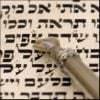On Simchat Torah, we celebrate finishing the reading of the Torah and immediately begin it again. It’s an exciting day, full of song and dancing. But have you ever wondered why we do this on Simchat Torah?
If the Torah was given on Shavuot, wouldn’t it make sense to celebrate the Torah and start the reading cycle then? Why wait until months later?
Reply
To understand this, we need to recall what happened after Shavuot.
At Mount Sinai, G‑d gave the first Tablets, the Torah engraved by His own hand. It was a moment of perfect holiness. The Jewish people stood pure and united, declaring with complete devotion, “We will do and we will hear.”
But soon after came the sin of the Golden Calf, and that Divine perfection was shattered—literally. When Moses descended and saw what had happened, he broke the Tablets. The covenant that had been formed at Sinai seemed lost.
For months, Moses pleaded with G‑d to forgive the people. Finally, G‑d granted forgiveness, and on Yom Kippur, Moses descended once more, this time carrying the second Tablets.
Thus, while Shavuot marks the day the Torah was first given, Yom Kippur marks the day it was truly received through repentance, forgiveness, and renewed commitment.
Gift vs. Effort
The first Tablets reflected revelation from above. The second Tablets came after a period of failure and forgiveness, and thus reflected human striving from below. They embody a bond with G‑d that is born of our own effort to return and reconnect.
For this reason, the great celebration of the Torah is held not on Shavuot but on Simchat Torah, which follows in the spiritual wake of Yom Kippur.
On Shavuot, the Torah was given as a gift from Heaven. The Jewish people stood ready and pure; the revelation was entirely Divine. But a gift, however precious, comes without effort and is therefore not truly ours. The sages call such unearned goodness “bread of shame,”1 for joy in something received effortlessly is incomplete.
On Simchat Torah, our joy is different. It was earned through a year of study, struggle and devotion. It is the joy of having made the Torah our own.
The Joy of Return
This also reflects the difference between the two sets of Tablets. The first were “the work of G‑d,” completely Divine. The second were “carved out by Moses,” symbolizing human partnership with the Divine.
The first Tablets express G‑d’s giving; the second express our striving.
And there is a deeper layer still: When the first Tablets were given, the people were tzaddikim, righteous and pure. When the second Tablets were given, it was after sin and repentance; the people had become baalei teshuvah, returnees to G‑d, whose relationship is deeper because it was once broken.
As the sages teach, “In the place where baalei teshuvah stand, even the completely righteous cannot stand.2”
And so, on Simchat Torah, we celebrate not only that the Torah was given, but that it was regained. It came from Heaven, but it has now become truly ours.
Why Not Yom Kippur?
Although the light of holiness is regained on Yom Kippur through teshuvah, at that point it is still only encompassing (makif), surrounding us. It takes time for this light to fully penetrate and become internalized.
This process unfolds through the festivals that follow: On Sukkot we dwell in the sukkah, which surrounds a person, symbolizing an all-encompassing embrace of holiness. We then reach Simchat Torah, when we return indoors, which represents settling and internalizing that encompassing light, creating a “house in which Torah grows.”3
By Simchat Torah, the connection to the Torah has fully taken root within. Distance is transformed into closeness, and we begin anew with Bereishit. This is a higher, deeper beginning, not merely a repetition.
On Simchat Torah, we truly receive the Torah through our own effort. That’s why we celebrate with dance—not with words or intellect, but with our feet. On Simchat Torah, every Jew rejoices in the Torah that has become an inseparable part of who we are.4







Start a Discussion